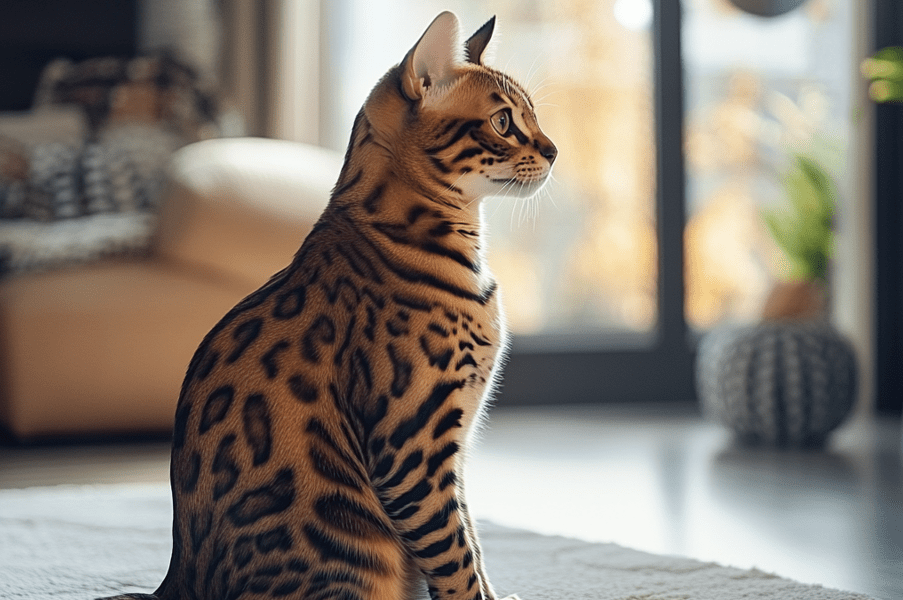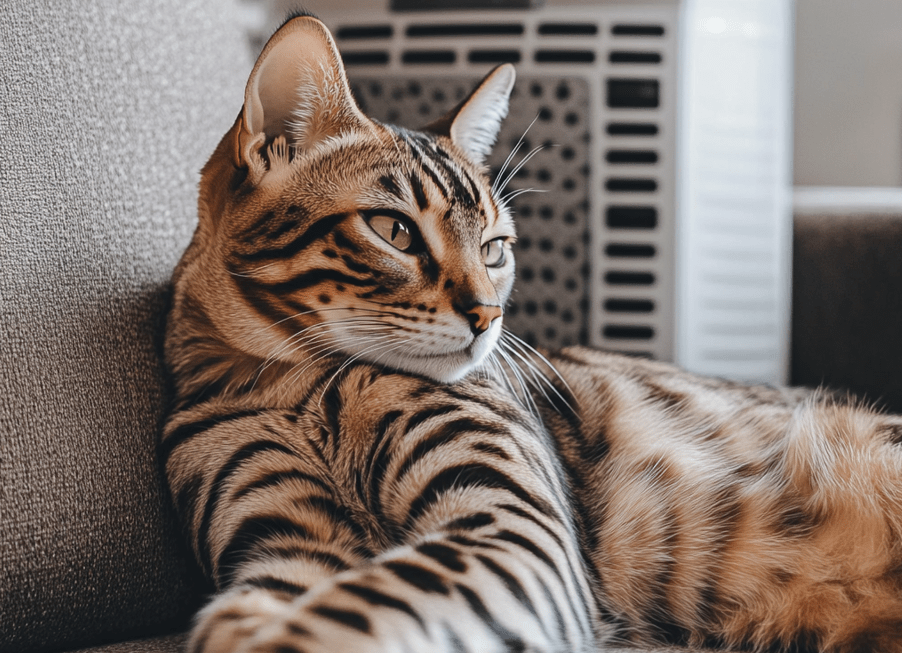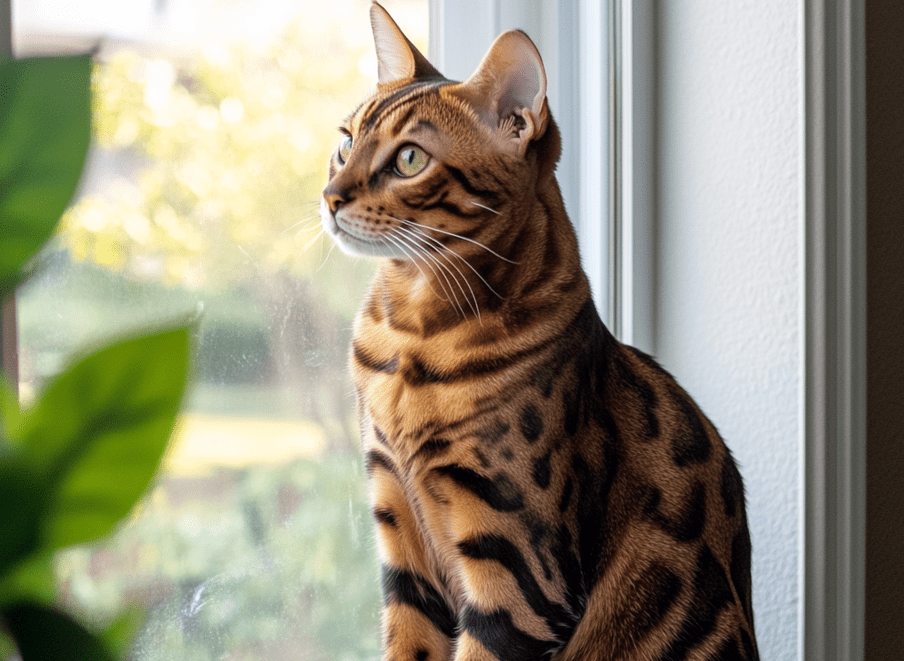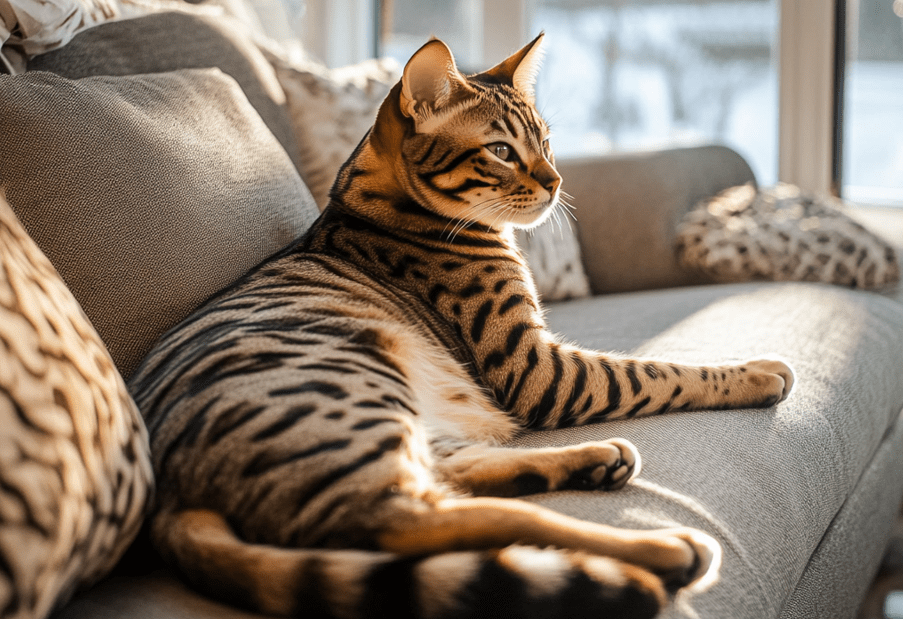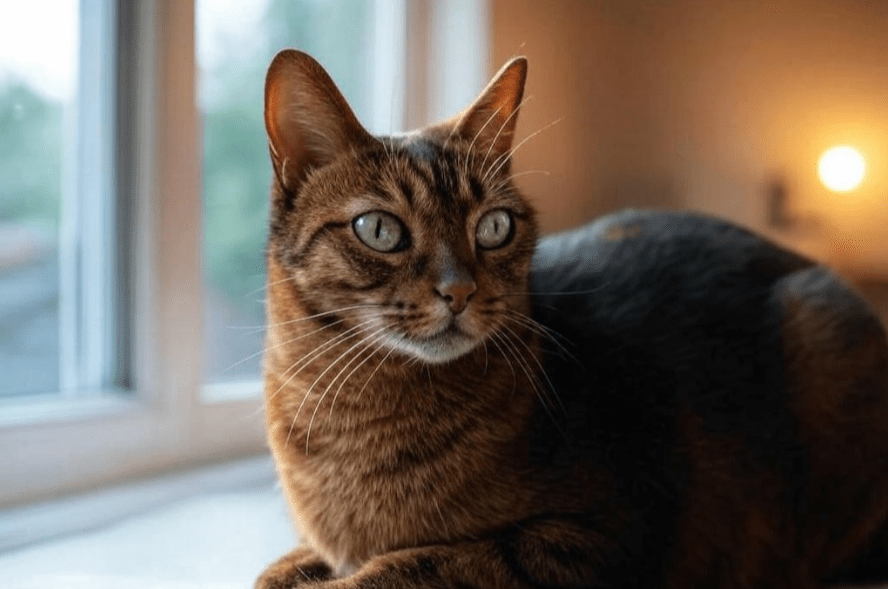
Creating a safe home environment for a Bengal cat, especially one with health issues, is essential to ensure their well-being and happiness. Bengal cats are known for their energetic, curious, and intelligent nature, but health challenges can make them more vulnerable to stress and injury. By designing a home that caters to their unique needs, you can help your Bengal thrive. This comprehensive guide explores practical steps, expert tips, and thoughtful strategies to make your home a safe haven for your Bengal cat with health concerns.
Understanding Bengal Cats and Their Needs
Bengal cats are a unique breed, celebrated for their striking coat patterns and playful, dog-like personalities. Originating from the crossbreeding of domestic cats with the Asian leopard cat, Bengals are highly active, inquisitive, and social. However, their energetic nature can pose challenges when they face health issues such as allergies, joint problems, heart conditions, or digestive sensitivities. A safe home environment minimizes risks, reduces stress, and supports their physical and emotional health.
Common Health Issues in Bengal Cats
Before diving into home modifications, it’s important to understand common health problems that may affect Bengals:
Hypertrophic Cardiomyopathy (HCM): A heart condition that requires a stress-free environment to prevent complications.
Progressive Retinal Atrophy (PRA): A genetic condition that can lead to vision loss, making navigation safety critical.
Food Allergies or Sensitivities: Dietary issues may require controlled feeding areas to avoid exposure to harmful foods.
Joint Issues or Arthritis: Common in older Bengals, necessitating easy access to resting spots and low-impact play areas.
Feline Lower Urinary Tract Disease (FLUTD): Stress can exacerbate urinary issues, so a calm environment is vital.
By addressing these conditions through environmental adjustments, you can significantly improve your Bengal’s quality of life.
Key Elements of a Safe Home Environment for Bengal Cats
Creating a safe home for a Bengal with health issues involves thoughtful planning. Below are the essential areas to focus on, with actionable tips for each.
1. Safe and Accessible Spaces
Bengals love to climb, jump, and explore, but health issues like arthritis or vision impairment may limit their mobility. To accommodate their needs:
Install ramps and low platforms: Replace high perches with gentle ramps or low cat trees to reduce strain on joints. For example, a cat tree with platforms no higher than 2-3 feet is ideal for an arthritic Bengal.
Create clear pathways: Remove clutter from floors to prevent tripping, especially for vision-impaired cats. Use textured rugs or mats to guide them to key areas like litter boxes or feeding stations.
Soft landing zones: Place cushioned mats or pet beds under favorite perching spots to soften any falls.
Tip: For Bengals with PRA, consider adding tactile or auditory cues, like a small bell near their water bowl, to help them navigate.
2. Stress-Free Environment
Stress can worsen many health conditions in Bengal cats, including HCM and FLUTD. A calm environment is crucial for their well-being.
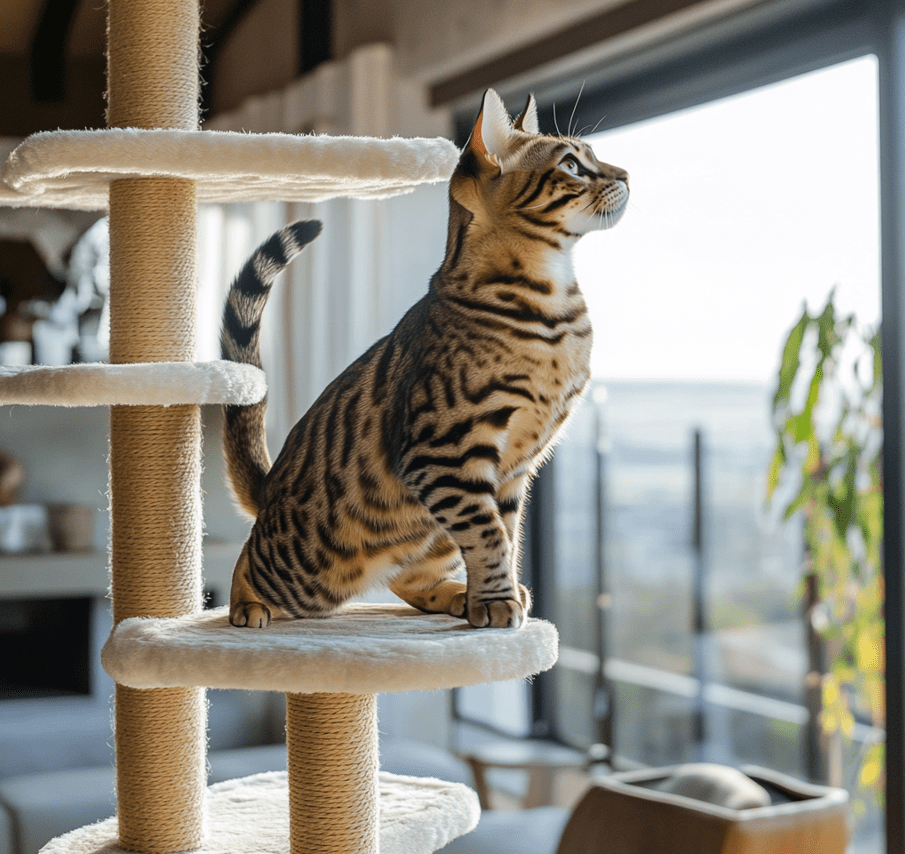
Designate quiet zones: Set up a cozy, secluded area with a soft bed or blanket where your Bengal can retreat. This is especially important in multi-pet households.
Minimize loud noises: Keep your Bengal’s space away from noisy appliances or high-traffic areas. Use soundproofing materials like heavy curtains if needed.
Use pheromone diffusers: Products like Feliway can help reduce anxiety and create a soothing atmosphere.
Case Study Insight: A 2023 study in the Journal of Feline Medicine and Surgery found that environmental stressors, such as sudden noises or lack of hiding spots, increased cortisol levels in cats with heart conditions. Providing a quiet, predictable space can mitigate these effects.
3. Safe and Enriching Toys
Bengals are playful and need mental stimulation, but toys must be safe for cats with health limitations.
Choose low-impact toys: Opt for lightweight toys like feather wands or soft balls that don’t require intense jumping or chasing. Avoid small toys that could be swallowed.
Interactive puzzles: Food-dispensing toys or puzzle feeders engage your Bengal’s mind without physical strain. These are especially helpful for cats with dietary restrictions, as they slow down eating.
Rotate toys regularly: Keep your Bengal engaged by introducing new toys every few weeks to prevent boredom.
Safety Note: Inspect toys for wear and tear, as frayed strings or broken parts can pose choking hazards.
4. Litter Box Accessibility and Hygiene
Litter box issues are common in Bengals with health problems like FLUTD or mobility challenges. Ensure the litter box setup is safe and accessible:
Use low-entry boxes: Choose a litter box with a low entrance (2-3 inches high) for cats with arthritis or joint pain.
Place multiple boxes: If your home is multi-level, have at least one litter box per floor to reduce strain. For vision-impaired cats, keep boxes in consistent locations.
Maintain cleanliness: Scoop daily and clean the box weekly to prevent infections, which can be particularly harmful for cats with urinary issues.
Pro Tip: Consider unscented, dust-free litter to avoid respiratory irritation, especially for Bengals with allergies.
5. Nutrition and Feeding Safety
Bengals with health issues often require specialized diets. A safe feeding environment ensures they eat appropriately and avoid harmful substances.
Elevated feeding stations: Raise food and water bowls to a comfortable height (about 4-6 inches) to reduce strain on the neck and joints.
Separate feeding areas: In multi-pet homes, feed your Bengal in a private space to prevent stress or food theft.
Secure food storage: Store pet food in airtight containers to prevent accidental ingestion of spoiled or allergenic ingredients.
Expert Advice: Consult your veterinarian to create a diet plan tailored to your Bengal’s health needs, such as hypoallergenic food for allergies or low-ash diets for urinary health.
6. Temperature and Air Quality Control
Bengals are sensitive to extreme temperatures and poor air quality, which can exacerbate health issues.
Maintain a comfortable temperature: Keep your home between 68-78°F to avoid stress on cats with heart or respiratory conditions.
Improve air quality: Use air purifiers to reduce dust, pollen, and other allergens. Avoid smoking or using strong chemical cleaners near your Bengal.
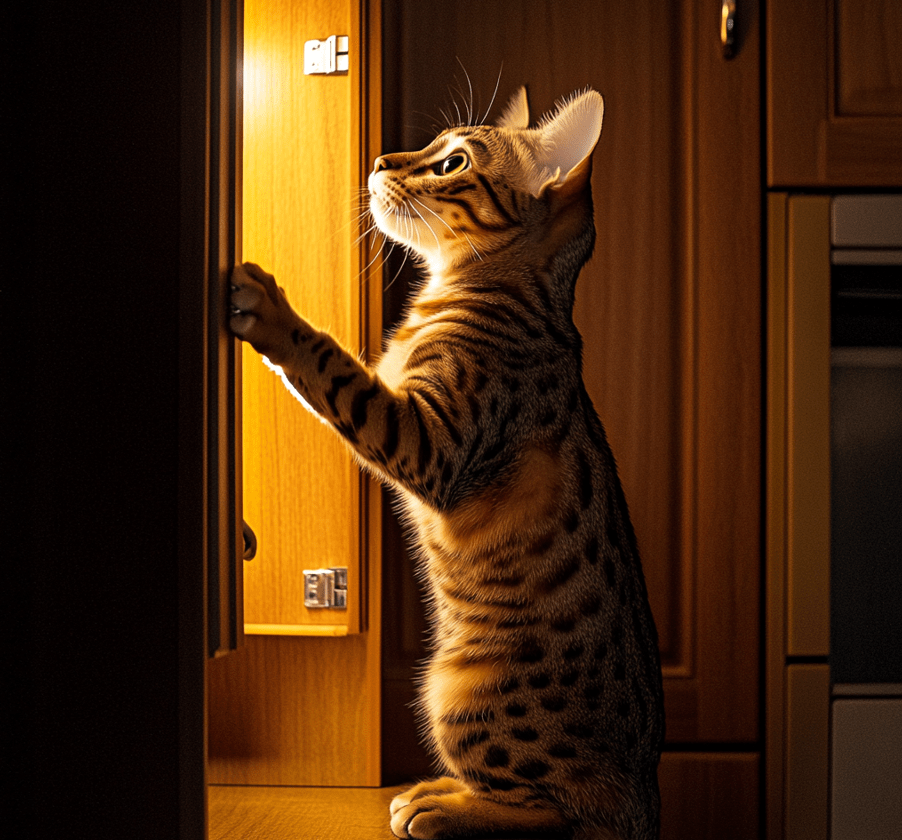
Provide hydration: Ensure fresh water is always available, ideally through a pet fountain, which encourages drinking and supports urinary health.
7. Pet-Proofing Your Home
Bengals are notorious for getting into mischief, and health issues can make accidents more dangerous. Pet-proofing is critical:
Secure hazardous items: Lock away toxic substances like cleaning products, medications, and certain plants (e.g., lilies, which are highly toxic to cats).
Cover electrical cords: Use cord protectors to prevent chewing, which can lead to shocks or burns.
Check windows and balconies: Install sturdy screens on windows and netting on balconies to prevent falls, especially for vision-impaired Bengals.
Checklist for Pet-Proofing:
-
Remove small objects that could be swallowed.
-
Secure heavy furniture to prevent tipping.
-
Use non-toxic, pet-safe cleaning products.
8. Veterinary Care and Monitoring
A safe home environment includes proactive health management. Regular veterinary care is essential for Bengals with chronic conditions.
Schedule routine checkups: Monitor your Bengal’s condition with bi-annual or quarterly vet visits, depending on their health needs.
Set up a home monitoring system: Use a pet camera to observe your Bengal’s behavior when you’re away, which can help detect early signs of distress.
Keep a health journal: Track symptoms, diet changes, or behavioral shifts to share with your veterinarian.
Technology Tip: Smart pet feeders with portion control can help manage dietary needs, while activity trackers can monitor your Bengal’s movement patterns.
Tailoring the Environment to Specific Health Issues
Each health condition requires specific adjustments to the home environment. Here’s how to address some common Bengal health challenges:
Hypertrophic Cardiomyopathy (HCM)
-
Minimize physical exertion with low cat trees and gentle play.
-
Create a calm, predictable routine to reduce stress.
-
Keep emergency vet contact information easily accessible.
Progressive Retinal Atrophy (PRA)
-
Use consistent layouts to help your Bengal memorize their surroundings.
-
Add sensory cues like textured mats or bells to key areas.
-
Avoid rearranging furniture frequently.
Food Allergies
-
Store all food securely to prevent accidental exposure.
-
Use stainless steel or ceramic bowls, which are less likely to harbor bacteria.
-
Monitor for skin or digestive symptoms after introducing new foods.
Arthritis or Joint Pain
-
Provide heated pet beds to soothe sore joints.
-
Install non-slip mats on slippery floors to aid mobility.
-
Consider pet-safe supplements like glucosamine, as recommended by your vet.
Enrichment for Mental and Emotional Health
A safe home isn’t just about physical safety—it’s also about keeping your Bengal mentally stimulated and emotionally fulfilled.
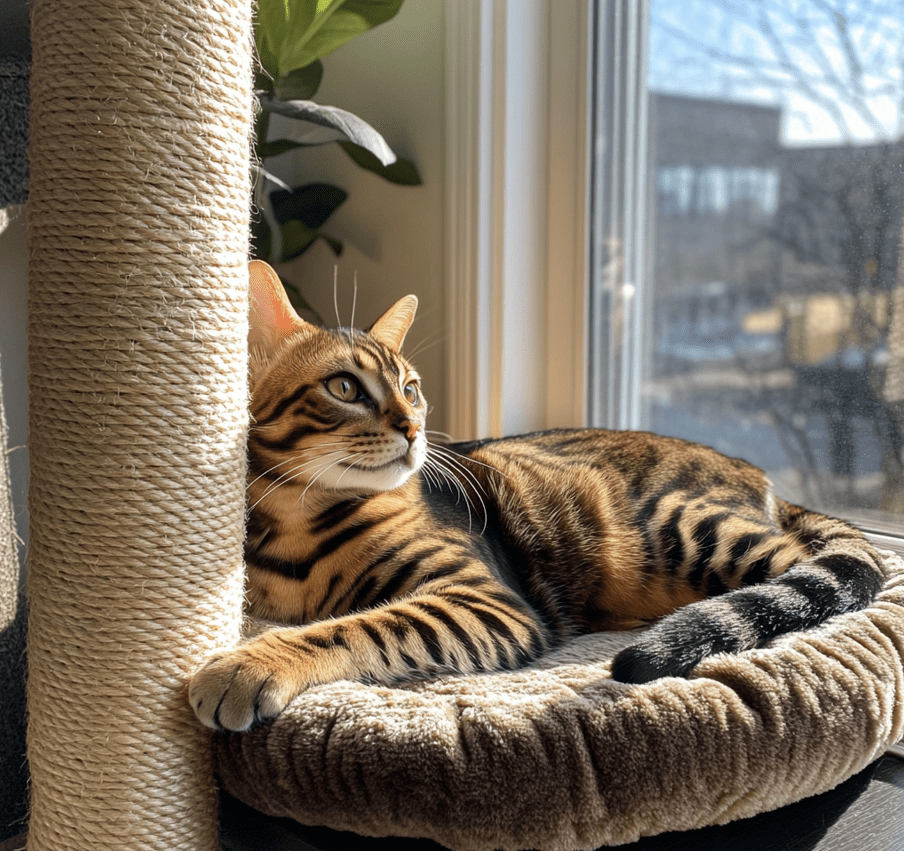
Vertical spaces: Even with health limitations, Bengals love height. Use wall-mounted shelves or low cat trees for safe exploration.
Window perches: A secure window perch allows your Bengal to watch birds or outdoor activity, providing mental stimulation.
Scent games: Hide pet-safe herbs like catnip in safe areas to engage their sense of smell.
Fun Fact: Bengals are known for their love of water. A pet fountain or a shallow, supervised water play area can be a safe, enriching activity for healthy Bengals.
Working with Professionals
For Bengals with complex health needs, consider consulting professionals:
Veterinary behaviorists: They can help address anxiety or stress-related behaviors.
Pet-proofing experts: Professional organizers can assess your home for hidden dangers.
Feline nutritionists: They can design diets tailored to your Bengal’s health conditions.
Maintaining a Safe Home Over Time
A safe home environment requires ongoing maintenance:
Regular safety checks: Inspect your home monthly for new hazards, like frayed cords or loose furniture.
Update as needed: As your Bengal’s health evolves, adjust their environment to meet new needs.
Stay informed: Follow reputable sources like the International Cat Care website or veterinary journals for the latest feline health insights.
Conclusion
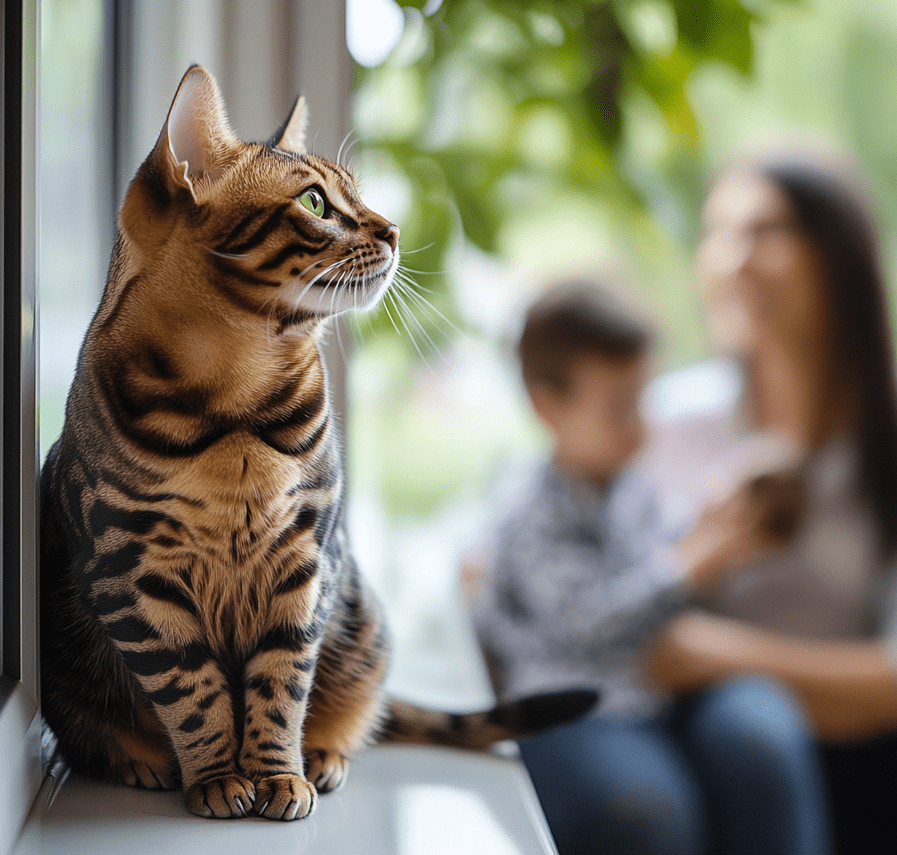
Creating a safe home environment for a Bengal cat with health issues is a labor of love that pays off in a happier, healthier pet. By focusing on accessibility, stress reduction, safety, and enrichment, you can provide your Bengal with a nurturing space that supports their unique needs. Whether it’s installing ramps for an arthritic Bengal or securing toxic items for an allergy-prone cat, every small change makes a big difference. With careful planning and ongoing care, your home can become a sanctuary where your Bengal thrives, despite their health challenges.
For personalized advice, consult your veterinarian or a feline behaviorist to tailor these strategies to your Bengal’s specific needs. Your Bengal’s well-being is worth the effort, and a safe home is the foundation for a long, fulfilling life.

